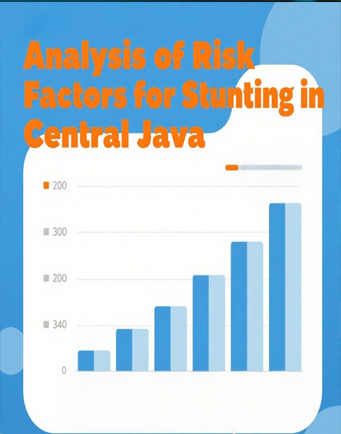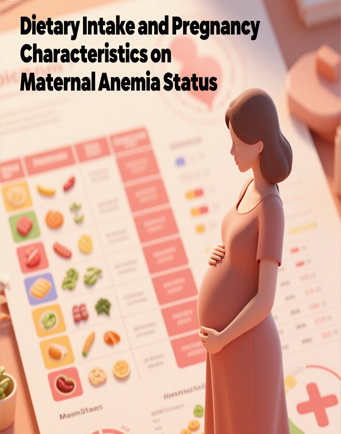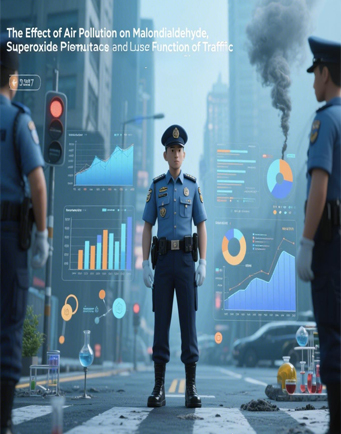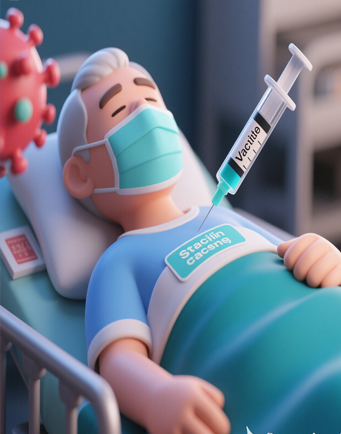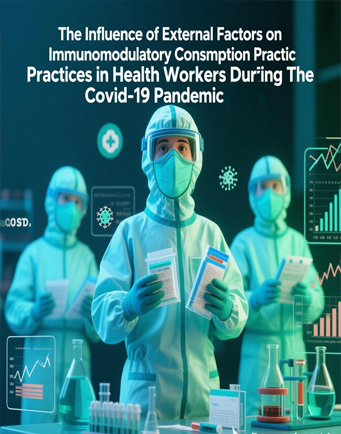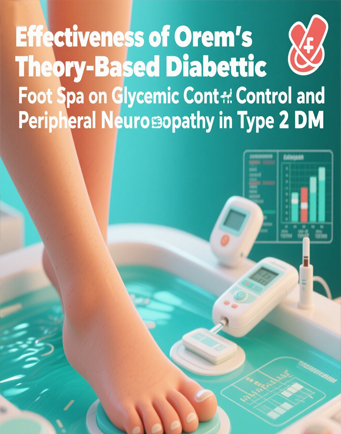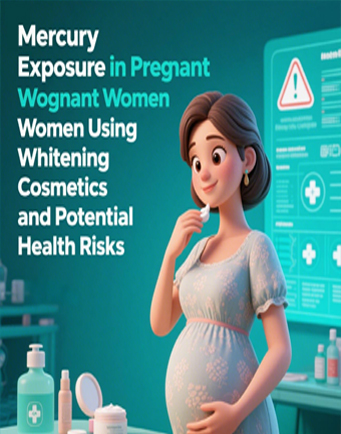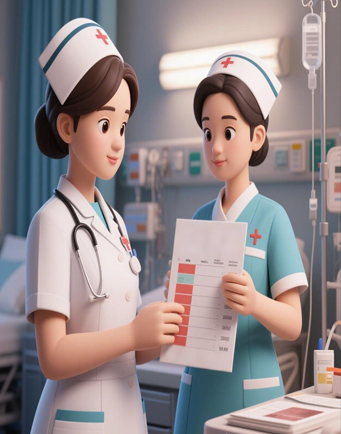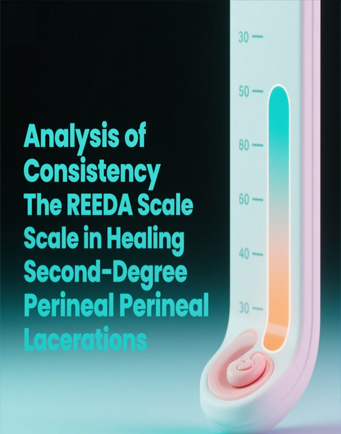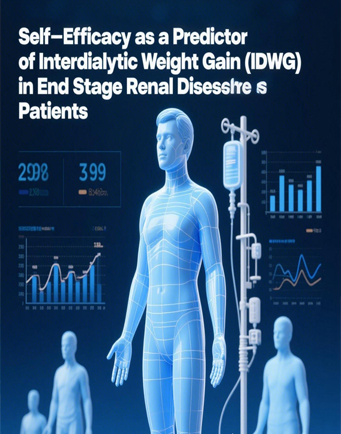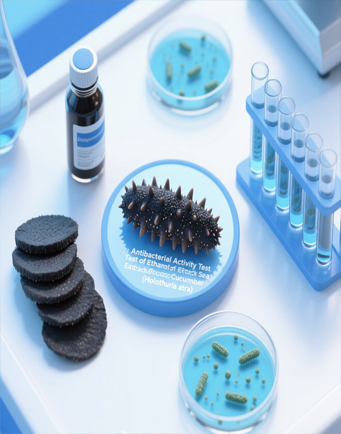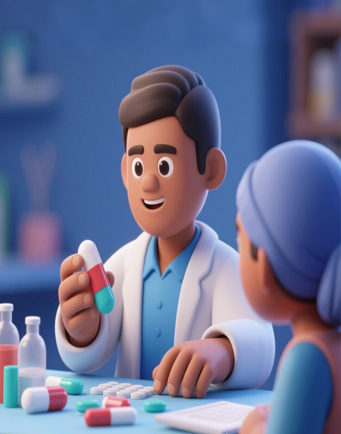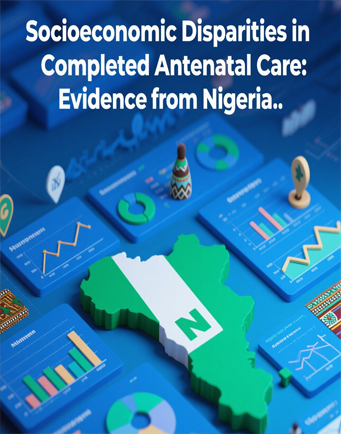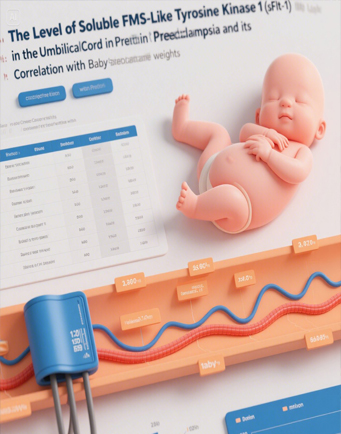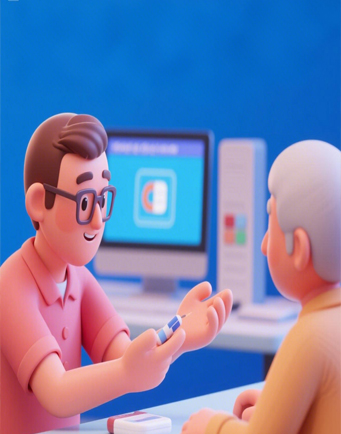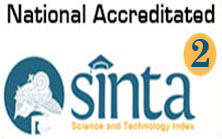Implementation of Stress Management to Decrease Blood Glucose Level of People with Diabetes Mellitus
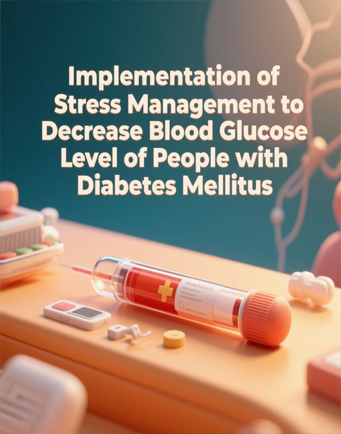
Downloads
Chronic hyperglycemia in patients with diabetes mellitus (DM) can be worsened by prolonged physical and emotional stress, which increases stress hormones like cortisol and raises blood glucose levels. Effective stress management is therefore essential to prevent glucose fluctuations and reduce the risk of diabetes-related complications. Techniques such as deep breathing exercises, progressive muscle relaxation, and hypnosis have been shown to lower stress hormones, enhance endorphin release, and improve glycemic control. This study aimed to measure patients' blood sugar levels before and after administering stress management interventions, including deep breathing relaxation techniques and five-finger hypnosis. The study method used a quasi-experimental design with a pre- and post-test approach, without a control group, was used. A total of 61 DM patients from the Diabetes Center in Ternate City were recruited through simple random sampling. The intervention consisted of deep breathing exercises, progressive muscle relaxation, and five-finger hypnosis. Blood glucose levels were measured before and after the intervention. Data analysis involved paired t-tests, ANOVA, and correlation tests. The results showed that the mean blood glucose level decreased from 215.75 mg/dL to 209.62 mg/dL following the intervention, with a mean difference of -6.13 mg/dL. However, this reduction was not statistically significant (p = 0.0593; α = 0.05). It was concluded that there was a decrease in blood glucose levels after the intervention, although the difference was not statistically significant. The application of this study suggests that stress management techniques such as deep breathing, relaxation, and five-finger hypnosis may provide benefits in managing stress. Further studies using controlled designs and larger sample sizes are recommended.
Adam, L., & Tomayahu, M. B. (2019). Tingkat Stres Dengan Kadar Gula Darah Pada Pasien Diabetes Melitus. Jambura Health and Sport Journal, 1(1), 1–5. https://doi.org/10.37311/jhsj.v1i1.2047
Boku, A., Ruhyana, R., & Suprayitno, E. (2019). Faktor-Faktor yang Berhubungan terhadap Kadar Gula Darah Pada Penderita Diabetes Melitus Tipe II di RS PKU Muhammadiyah Yogyakarta. Skripsi thesis. Universitas Muhamadiyah Yogyakarta. Retrieved from: https://digilib.unisayogya.ac.id/4586/
Badan Penelitian dan Pengenbangan Kesehatan. (2019). Laporan Nasional Riskesdas 2018. Jakarta: Badan Penelitian dan Pengembangan Kesehatan, Kementerian Kesehatan Republik Indonesia.
Decroli, E. (2019). Diabetes Melitus Tipe 2. Padang: Pusat Penerbitan Bagian Ilmu Penyakit Dalam Fakultas Kedokteran Universitas Andalas.
Hanum, L., Daengsari, D. P., & Kemala, C. N. (2016). Penerapan manajemen stres berkelompok dalam menurunkan stres pada lanjut usia berpenyakit kronis. Jurnal Psikologi, 43(1), 42-51. https://doi.org/10.22146/jpsi.11501
Indriyani, M. R., & Ambarwati, A. (2018). Terapi Relaksasi Nafas dalam (Deep Breathing) dalam menurunkan kadar gula darah pada pasien diabetes melitus tipe II. JPK: Jurnal Profesi Keperawatan, 4(2), 59-67.
Karokaro, T. M., & Riduan, M. (2019). Pengaruh Teknik Relaksasi Otot Progresif Terhadap Penurunan Kadar Gula Darah Pada Pasien Diabetes Mellitus Tipe 2 Di Rumah Sakit Grandmed Lubuk Pakam. Jurnal Keperawatan Dan Fisioterapi (JKF), 1(2), 48–53. https://doi.org/10.35451/jkf.v1i2.169
Kementerian Kesehatan Republik Indonesia. (2014). Waspada Diabetes:Situasi dan Analisis Diabetes. Jakarta: Pusat Data Dan Informasi Kementerian Kesehatan Republik Indonesia.
Kresnoadi, E. (2017). Stress Hiperglikemia. Jurnal Kedokteran, 2(3), 51–60
Muhammad Khir, S., Wan Mohd Yunus, W. M. A., Mahmud, N., Wang, R., Panatik, S. A., Mohd Sukor, M. S., & Nordin, N. A. (2024). Efficacy of Progressive Muscle Relaxation in Adults for Stress, Anxiety, and Depression: A Systematic Review. Psychology Research and Behavior Management, 17, 345–365. https://doi.org/10.2147/PRBM.S437277
Muhlisin, A., Ambarwati, W. N., & Pratiwi, A. (2015). Model Terapi Kognitif Untuk Meningkatkan Kualitas Hidup. University Research Colloquium 2015, 1–8.
Mukona, D. M., & Zvinavashe, M. (2020). Self-management of diabetes mellitus during the Covid-19 pandemic: Recommendations for a resource limited setting. Diabetes & Metabolic Syndrome: Clinical Research & Reviews, 14(6), 1575-1578. https://doi.org/10.1016/j.dsx.2020.08.022
Pathan, F. K. M., Pandian, J. S., Shaikh, A. I., Ahsan, M., Nuhmani, S., Iqbal, A., & Alghadir, A. H. (2023). Effect of slow breathing exercise and progressive muscle relaxation technique in the individual with essential hypertension: A randomized controlled trial. Medicine, 102(47), e35792. https://doi.org/10.1097/MD.0000000000035792
Perkumpulan Endokrinologi Indonesia. (2021). Pedoman Pengelolaan dan Pencegahan Diabetes Melitus Tipe 2 di Indonesia 2021. Jakarta: PB. PERKENI.
UPTD Diabetes Center. (2021). Profil Kerja Diabetes Center Kota Ternate Tahun 2021. Dinas Kesehatan Kota Ternate.
Ratnawati, D., Siregar, T., & Wahyudi, C. T. (2018). Terapi relaksasi benson termodifikasi efektif mengontrol gula darah pada lansia dengan diabetes mellitus. Jurnal Kedokteran Dan Kesehatan, 14(2), 83-93. Retrieved from: https://jurnal.umj.ac.id/index.php/JKK/article/view/2527
Hartmann-Boyce, J., Morris, E., Goyder, C., Kinton, J., Perring, J., Nunan, D., Mahtani, K., Buse, J. B., Del Prato, S., Ji, L., Roussel, R., & Khunti, K. (2020). Diabetes and COVID-19: Risks, Management, and Learnings From Other National Disasters. Diabetes care, 43(8), 1695–1703. https://doi.org/10.2337/dc20-1192
Masithoh, R. F., Ropi, H., & Kurniawan, T. (2016). Pengaruh Terapi Akupresur Terhadap Kadar Gula Darahpada Pasien Diabetes Melitus Tipe Iidi Poliklinik Penyakit Dalam RS Tk II Dr. Soedjono Magelang. Journal of Holistic Nursing Science, 3(2), 26-37. Retrieved from: https://journal.unimma.ac.id/index.php/nursing/article/view/872
Selfi, B. F., Simbolon, D., & Kusdalinah, K. (2018). Pengaruh Edukasi Pola Makan dan Senam terhadap Kadar Gula Darah Pada Penderita DM Tipe 2. Jurnal Kesehatan, 9(2), 325. https://doi.org/10.26630/jk.v9i2.948
Videbeck, S. L. (2008). Buku Ajar Keperawatan Jiwa . Jakarta: EGC.
Wahyuni, A., Kartika, I. R., & Pratiwi, A. (2018). Relaksasi Autogenik Menurunkan Kadar Gula Darah Pasien Diabetes Melitus Tipe 2. REAL in Nursing Journal, 1(3), 133-140. https://doi.org/10.32883/rnj.v1i3.475
World Health Organization. (2016). Global Report on Diabetes. World Health Organization. Retrieved from: https://www.who.int/publications/i/item/9789241565257
Yulianti, Y., & Armiyati, Y. (2019). Kombinasi Relaksasi Nafas Dalam dan Murottal Surah Ar-Rahman Menurunkan Gula Darah Sewaktu pada Pasien DM Tipe II. Prosiding Seminar Nasional Mahasiswa Unimus, 2(1), 95–101. Retrieved from: https://prosiding.unimus.ac.id/index.php/mahasiswa/article/view/446
Zainuddin, M., Utomo, W., & Herlina. (2015). Hubungan Stres dengan Kualitas Hidup Penderita Diabetes Millitus Tipe 2. Jurnal Online Mahasiswa, 2(1), 890–898. Retrieved from: https://jom.unri.ac.id/index.php/JOMPSIK/article/view/5213
Zhou, Y., Yang, Q., Chi, J., Dong, B., Lv, W., Shen, L., & Wang, Y. (2020). Comorbidities and the risk of severe or fatal outcomes associated with coronavirus disease 2019: A systematic review and meta-analysis. International Journal of Infectious Diseases, 99, 47-56. https://doi.org/10.1016/j.ijid.2020.07.029
Copyright (c) 2025 JURNAL INFO KESEHATAN

This work is licensed under a Creative Commons Attribution-NonCommercial-ShareAlike 4.0 International License.
Copyright notice
Ownership of copyright
The copyright in this website and the material on this website (including without limitation the text, computer code, artwork, photographs, images, music, audio material, video material and audio-visual material on this website) is owned by JURNAL INFO KESEHATAN and its licensors.
Copyright license
JURNAL INFO KESEHATAN grants to you a worldwide non-exclusive royalty-free revocable license to:
- view this website and the material on this website on a computer or mobile device via a web browser;
- copy and store this website and the material on this website in your web browser cache memory; and
- print pages from this website for your use.
- All articles published by JURNAL INFO KESEHATAN are licensed under the Creative Commons Attribution 4.0 International License. This permits anyone to copy, redistribute, remix, transmit and adapt the work provided the original work and source is appropriately cited.
JURNAL INFO KESEHATAN does not grant you any other rights in relation to this website or the material on this website. In other words, all other rights are reserved.
For the avoidance of doubt, you must not adapt, edit, change, transform, publish, republish, distribute, redistribute, broadcast, rebroadcast or show or play in public this website or the material on this website (in any form or media) without appropriately and conspicuously citing the original work and source or JURNAL INFO KESEHATAN prior written permission.
Permissions
You may request permission to use the copyright materials on this website by writing to jurnalinfokesehatan@gmail.com.
Enforcement of copyright
JURNAL INFO KESEHATAN takes the protection of its copyright very seriously.
If JURNAL INFO KESEHATAN discovers that you have used its copyright materials in contravention of the license above, JURNAL INFO KESEHATAN may bring legal proceedings against you seeking monetary damages and an injunction to stop you using those materials. You could also be ordered to pay legal costs.
If you become aware of any use of JURNAL INFO KESEHATAN copyright materials that contravenes or may contravene the license above, please report this by email to jurnalinfokesehatan@gmail.com
Infringing material
If you become aware of any material on the website that you believe infringes your or any other person's copyright, please report this by email to jurnalinfokesehatan@gmail.com.


